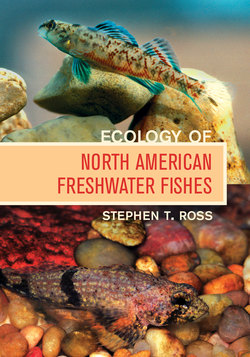Читать книгу Ecology of North American Freshwater Fishes - Stephen T. Ross Ph. D. - Страница 8
На сайте Литреса книга снята с продажи.
ОглавлениеPREFACE
The North American freshwater fish fauna, the most diverse temperate fish fauna in the world, is also one of the best-studied fish faunas. The taxonomy, systematics, and biology of the fish fauna are treated in a number of excellent books, largely organized by country, province, or state, and by a forthcoming three-volume series treating the entire North American fish fauna on a family-by-family basis (Warren and Brooks, in press). Given the amount of information available, the time is right for an ecological text that also focuses on the North American ichthyofauna. There have been excellent books dealing with ecology of fishes, but none have had their primary emphasis on the North American freshwater ichthyofauna (the fishes occurring in Canada, the continental United States, and the temperate regions of Mexico).
Foremost in writing this book, I have tried to convey the amazingly interesting and exciting things that we know about fishes. In doing this, however, it soon becomes apparent that most of what is known about a particular aspect of fish biology is often based on only a small fraction of the total number of fish species, or only on a small part of a species’ range. Part 1 of the text provides a broad picture, both spatially and temporally, of the derivation of the North American freshwater fish fauna. This includes examples of how global as well as North American geological and climatological processes have shaped the fauna. Part 2 focuses on how local populations and assemblages are formed and how they persist, or not, through time. Part 3 deals with the relationship of body-form and life-history patterns as they are related to ecological functions. The wide range and complexity of interactions among individuals and species through communication, competition, predation, mutualism, and facilitation are the topics of Part 4. Part 5 focuses on several primary conservation issues concerning fish populations. It also integrates much of the information presented in the first four parts. The organization of the book is intended to lead the reader from a broadscale appreciation of why specific species and assemblages occur in particular places to a finer-scale look at how individuals and species interact with each other and with their environments, how such interactions have been altered by anthropogenic impacts, and the relative success of efforts to restore damaged ecosystems.
Even though the emphasis is on studies of North American fishes, I have included pertinent examples from other continents. Because the methods or concepts that form the basis for understanding fish ecology and conservation come from diverse areas (systematics, statistics, population ecology, molecular genetics, stable isotope analysis, environmental ethics, etc.), the chapters also include text boxes that help to provide additional background information.
The intended audience for this book includes upper-level undergraduate students, graduate students, professional fish biologists, and anyone else curious about or with a passion for fishes. Students using this book would benefit from having taken a general biology sequence. A general ecology course, although not absolutely necessary, would also provide helpful background. The book should be appropriate for use in one or two-semester undergraduate and/or graduate courses in fish ecology.
